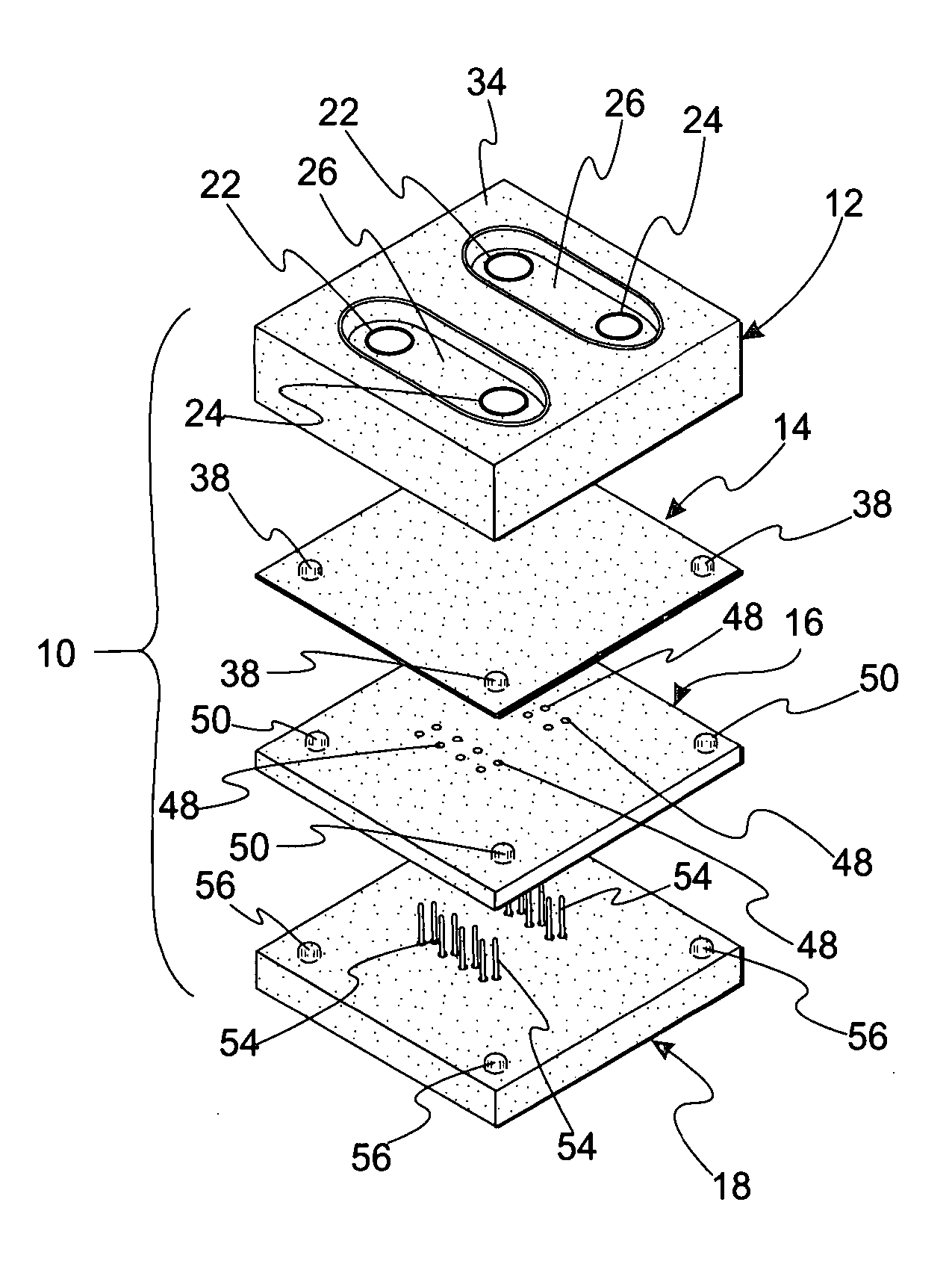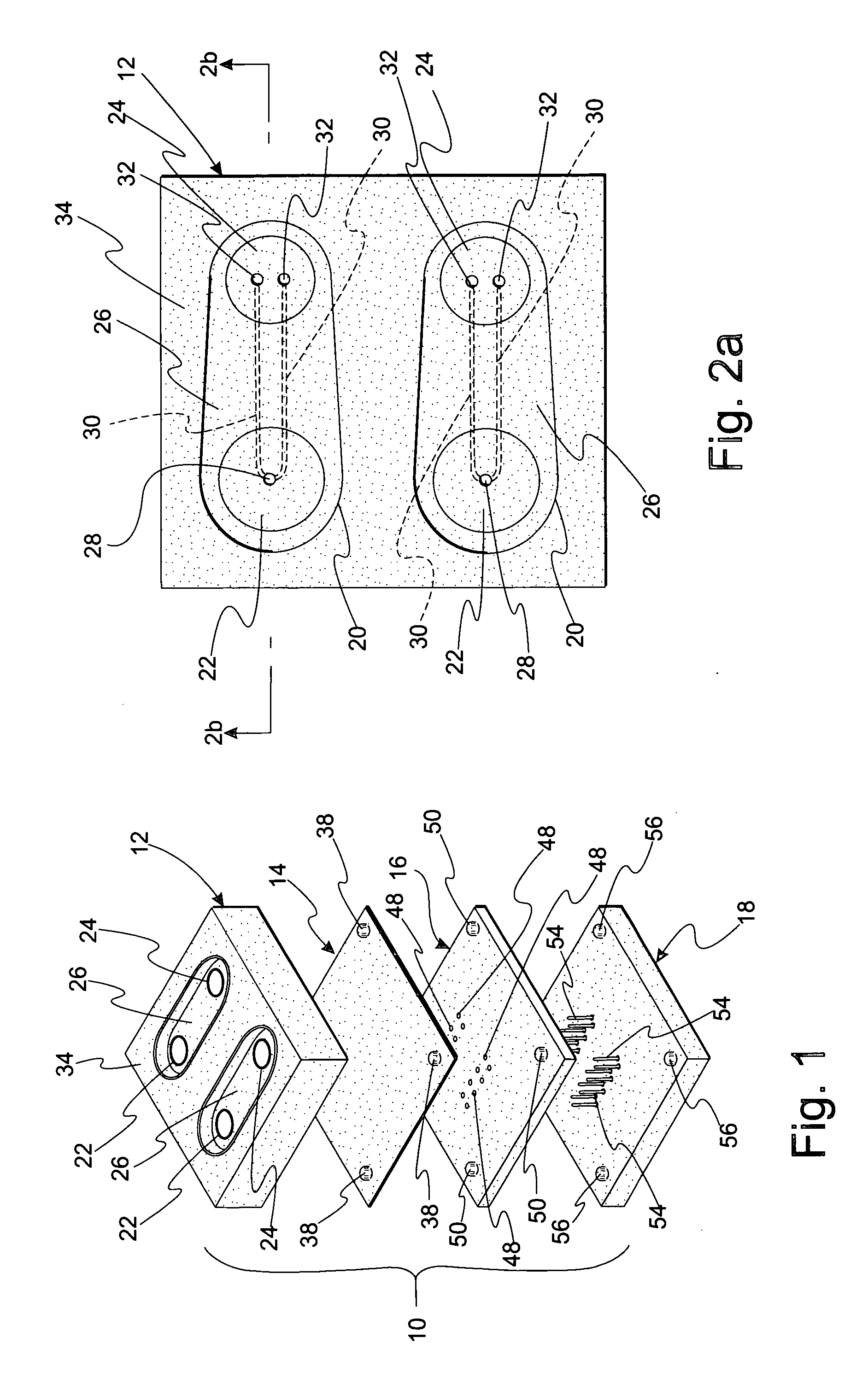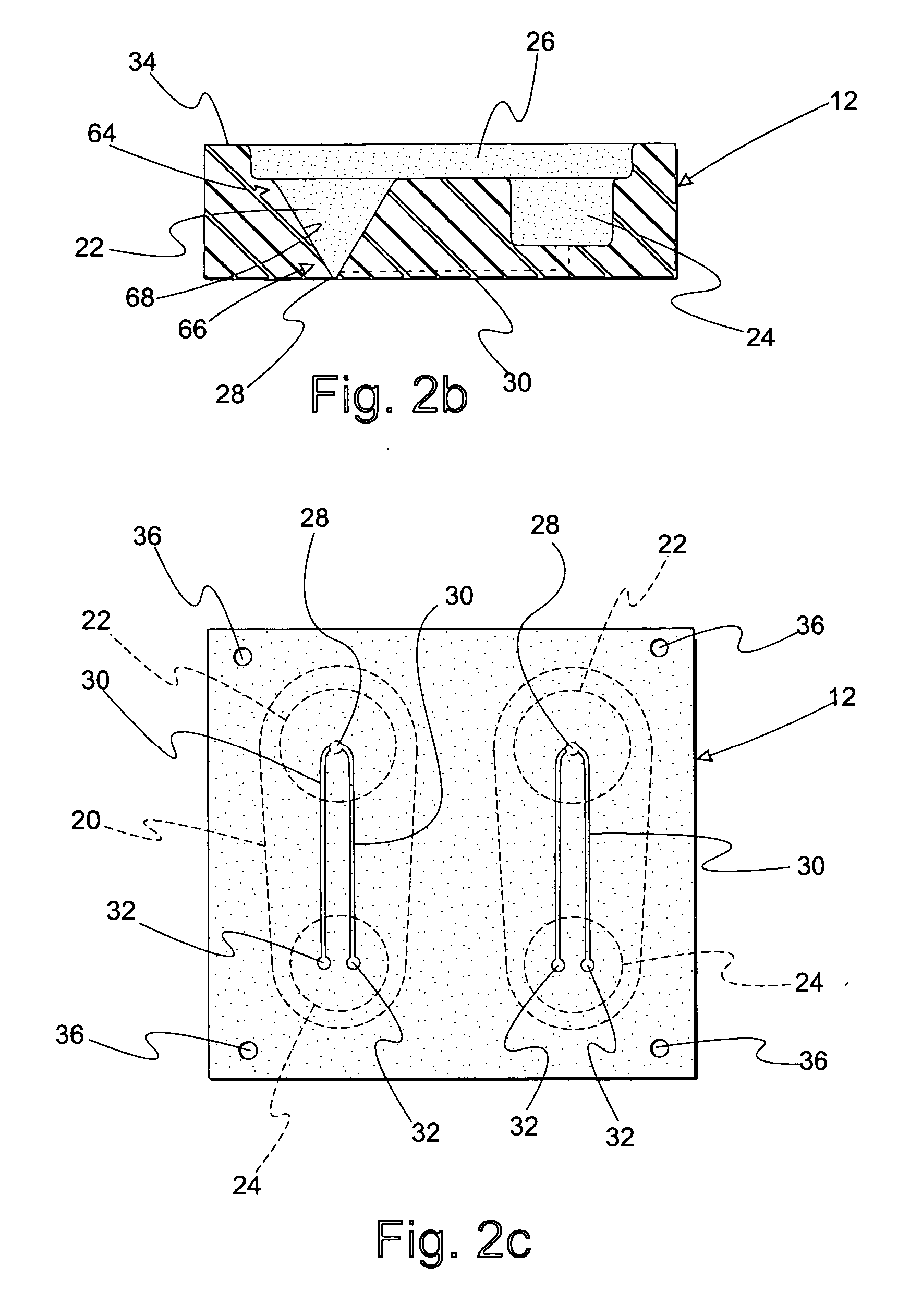Microfluidic cell culture device and method for using same
a microfluidic cell culture and cell technology, applied in the field of microfluidic cell culture devices, can solve the problems of pdms based microfluidic chips, evaporation, cell death, etc., and achieve the effects of preventing undesirable shifts in the osmolality of the fluid, preventing evaporation of the fluid contained, and ensuring mechanical durability and stability
- Summary
- Abstract
- Description
- Claims
- Application Information
AI Technical Summary
Benefits of technology
Problems solved by technology
Method used
Image
Examples
Embodiment Construction
[0043]FIG. 1 is an exploded, perspective view of microfluidic cell culture system or device 10. Device 10 includes substrate 12 configured to receive a cellular mass, e.g., an embryo, as explained in detail below, non-rigid membrane 14, locating block 16, and pin actuating device 18.
[0044]FIG. 2a is a top view of substrate 12. Substrate 12 includes funnel 22, reservoir 24, and overlay reservoir 26. Bottom portion 28 of funnel 22 is in fluid communication with reservoir 24 via microchannel 30. Microchannel 30 has a volume less than 1 microliter. Reservoir 24 includes reservoir openings 32 which provide openings to microchannel 30 such that fluids may travel between funnel 22 and reservoir 24 as explained in detail below.
[0045]FIG. 2b is a side view, and in cross-section, of substrate 12 taken along section line 2b-2b in FIG. 2a. A portion of microchannel 30 is formed in substrate 12 while another portion of microchannel 30 is formed by membrane 14 as described in detail below. Micr...
PUM
 Login to View More
Login to View More Abstract
Description
Claims
Application Information
 Login to View More
Login to View More - R&D
- Intellectual Property
- Life Sciences
- Materials
- Tech Scout
- Unparalleled Data Quality
- Higher Quality Content
- 60% Fewer Hallucinations
Browse by: Latest US Patents, China's latest patents, Technical Efficacy Thesaurus, Application Domain, Technology Topic, Popular Technical Reports.
© 2025 PatSnap. All rights reserved.Legal|Privacy policy|Modern Slavery Act Transparency Statement|Sitemap|About US| Contact US: help@patsnap.com



